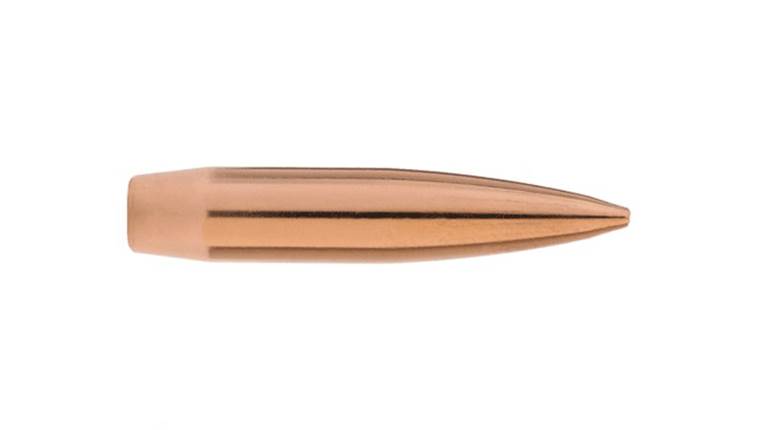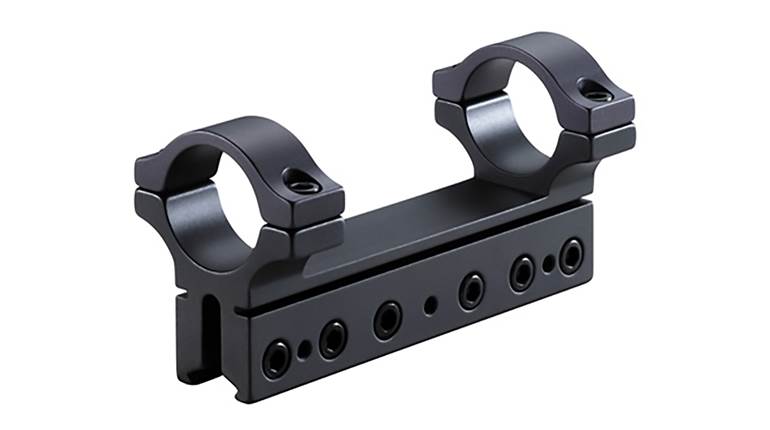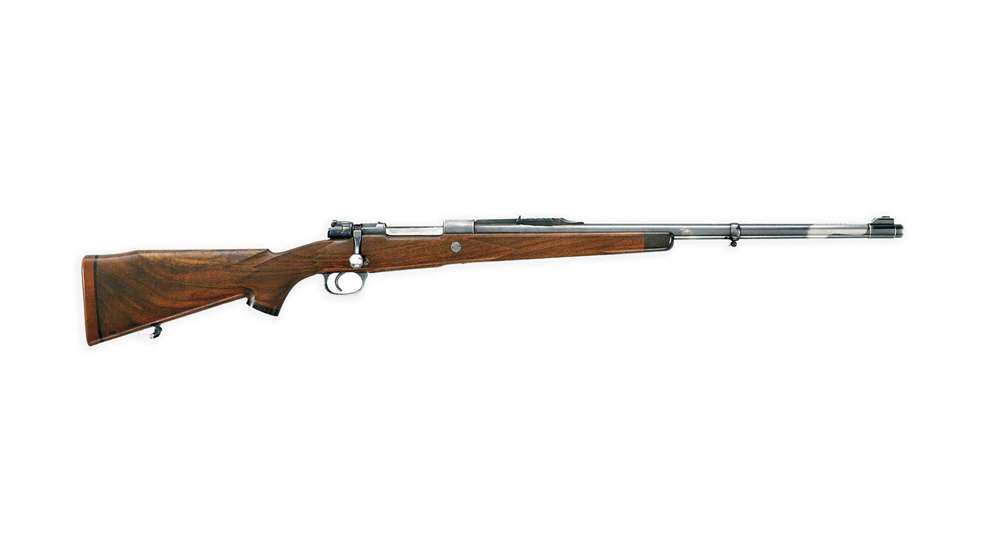
This article, “The Perfect Professional Hunter's Rifle,” appeared originally in the October 2004 issue of American Rifleman. To subscribe to the magazine, visit the NRA membership page here and select American Rifleman as your member magazine.
A professional hunter’s rifle is possibly the most important tool of his trade, and that which often keeps the close calls from becoming radio calls for help. Whether hunting Africa’s Big Five—elephant, rhino, buffalo, lion and leopard—on the African plains, or tracking a large Kodiak bear on the Alaskan tundra, the guides and professional hunters who lead their clients to dangerous game carry rifles on which the lives of many people depend.
Bearing in mind that an animal is only dangerous when at close quarters, it’s imperative that a professional hunter’s rifle shoot exactly to point of aim at close range and function flawlessly in the heat of the moment. Long before an aspiring professional hunter will have to brain a charging elephant, or down a brown bear at 15 paces, he should be so familiar with his rifle that it comes up as quickly and as naturally as pointing his finger.
Each individual professional hunter’s rifle embodies the characteristics of correct configuration, suitable caliber and reliable quality. Correct configuration relates to action type, style and fit of stock, barrel length, sight type, safety position, trigger pull and overall weight—all important features that enable the rifle to be brought to play quickly and accurately. Suitable caliber relates to the cartridges that are large enough to stop a charge. Reliable quality means the rifle should be the very best firearm the professional hunter can afford to buy.
In Africa, there are basically two types of rifles used by professional hunters: the bolt-action magazine rifle and the double-barreled, side-by-side rifle. In Alaska, you might also include big-bore lever-actions like Marlin’s Model 1895, which comes in .45-70 Gov’t, .450 Marlin, .480 Ruger and .475 Linebaugh, and the Model 444, which comes in .444 Marlin. All of these rifles serve as reliable back-up guns and big-bore stoppers in the areas where they’re used.
Double guns were the rifle of choice for most East African professional hunters during the first half of the 20th Century. Many of those early professional hunters firmly believed that a double rifle provided the advantage of two certain shots without having to cock or reload, as opposed to a possible three or four shots from a magazine rifle.
But faced with the rising cost of high-priced doubles and dwindling ammo sources following World War II, many of the young up-and-coming professional hunters gravitated to the more economical and available magazine rifles. Compared to other repeating actions, like the pump or lever-action, bolt-actions were considered to be more accurate and cycled ammunition more reliably. They also came chambered in a wide variety of cartridges ranging from the .22 center-fires up through the .500 Jeffery and .505 Gibbs.
Rifles & Cartridges
The topic of suitable guns and calibers for hunting dangerous animals has filled volumes of books and magazines and fueled countless campfire conversations in hunting camps all over the world. Several factors determine which rifle and cartridge best suits a specific hunt for a particular animal. Because animals vary so much in size and temperament and are found in such differing terrain, there’s no single gun or magic bullet that’s perfectly suited for all situations. A good rule to follow when hunting dangerous game is to use as much gun as would be suitable for following the animal were it wounded—in other words, a rifle/caliber combination capable of stopping a charge.
There are accepted minimum calibers determined by common sense, or as legally required in some countries. The .375 H&H Magnum, classified as a medium-heavy cartridge, is perhaps the most universally accepted caliber for hunting the world’s big game, including most of the dangerous species. But its stopping power is marginal against Africa’s largest game—a role better suited to the .400- or larger-caliber cartridges designed to cope with the large size, thick skin and heavy bones of buffalo, elephant and rhino. Although these animals can be killed under ideal circumstances with lighter calibers, using enough gun makes good sense. And because they have to deal with “worst-case scenarios,” a professional hunter’s rifle needs to be more than enough gun.
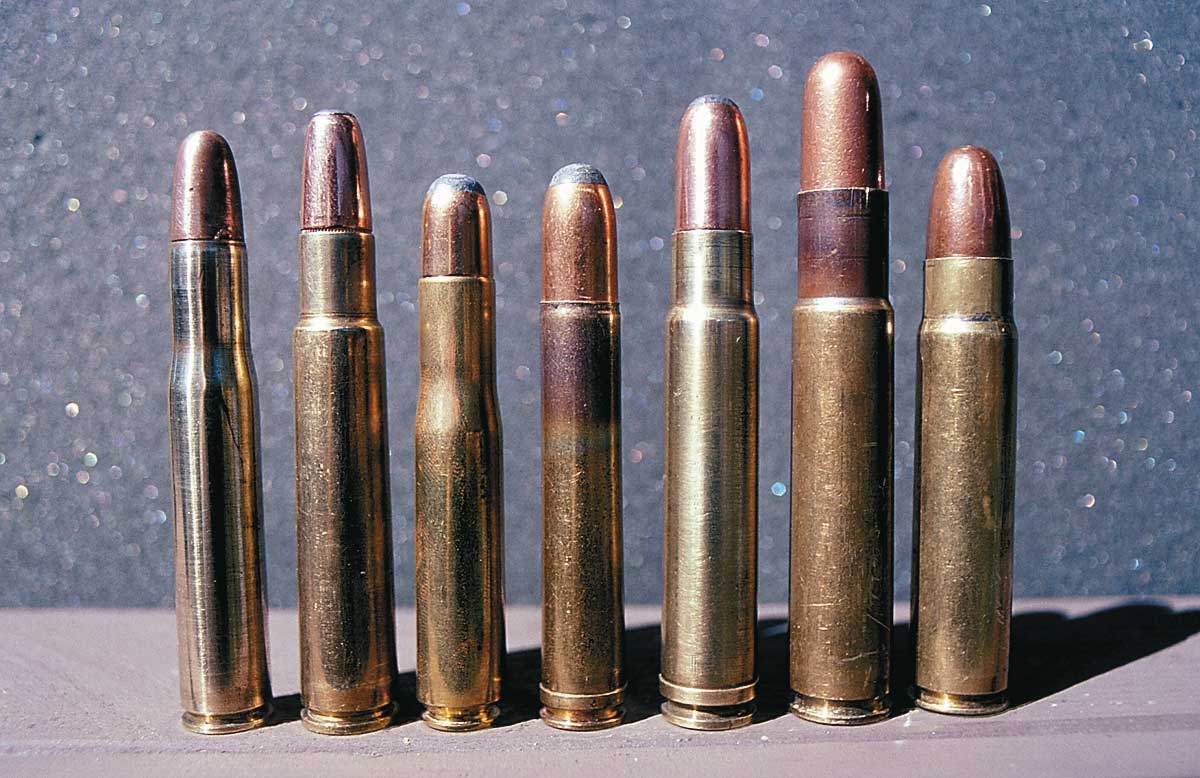
The late gun aficionado, and big-bore wildcatter, Jack Lott said it best when he once described the rifles he loved the most: “Big bores serve a function in providing that extra dosage of power commensurate with the greater size of the largest game and also for the stopping of charging dangerous game.” Lott did not dispute the fact that smaller conventional calibers have all performed such work with suitable bullets at times for exceptional hunters, but he felt these feats were not to be attempted by the vast majority of us—and he was right.
It might be possible to kill a lion, for example, with a .22 LR, if it were possible to place a shot precisely in his ear from very short range. But for all practical purposes that’s impossible under normal sport hunting circumstances, so more powerful cartridges are used to deliver the necessary velocities and terminal ballistics from greater distances. A .22 LR offers little margin for error even at short range, whereas a .375 H&H Magnum, effective out to 200 yds. or more, even allows some wiggle room at that distance.
For many years I used a Winchester Model 70 “African” chambered for the .458 Winchester Magnum cartridge. My experience with this caliber dates back to the late 1960s, during which time I had the chance to hunt buffalo, lion and elephant while living in Kenya with my family. It was with the same Model 70 .458 that I began professional hunting in Botswana, and which served me well for many years backing up clients on dangerous game. Later, I acquired a custom-built rifle of the same caliber built on a Mauser Model 98 action. At the time, my choice of .458 had to do with availability of ammo. Had other large calibers been available, I might have chosen a .416 Rigby or a .404 Jeffery. Though I have to admit that during the years I carried a .458, neither the rifle, nor the cartridge ever let me down.
Once when faced with a buffalo that charged out from a bush at close range without warning, the effect of a 500-gr., .458 bullet was dramatic indeed. The solid slammed the buff between the eyes and dropped him on his nose so quickly that all we could do for a minute or two was stare speechless at the dead buffalo laying just seven steps away. I recovered the bullet, which had retained its original shape, just under the thick ropey folds of skin at the back of his neck. Some might say the bullet should have exited, but you’ll hear no complaints about its performance from me.
Choosing bullets for a professional hunter’s rifle is pretty straightforward —full-metal-jacketed solids or monolithics are used for the thick-skinned game, while expanding bullets, or softpoints, are employed for the thin-skinned game such as lion, leopard and the large bears. When it comes to buffalo, there’s varying opinion regarding the use of softpoints or solids. Penetration is all-important on the heavy game, but there’s a chance that a solid from a side-on shot might pass through the buffalo and hit another animal. A compromise in the soft/solid argument is to use a softpoint for the first shot and load solids in the magazine for follow-up shots.
Essential Features
The late American Rifleman Field Editor Finn Aagaard, a former Kenya professional hunter himself, believed a professional hunter’s rifle should be strictly utilitarian. Aagaard wanted a rifle that was imminently portable—that is short enough to use in thick cover but still with enough heft to be steady on longer shots. He wanted sights that were usable from 15 feet to 100 or more yds. and the rifle would have to withstand hard, rough service, but above everything else, it had to be reliable.
Aagaard described reliability as unfailing mechanical functioning. “It must go bang without fail every time the action is operated and the trigger pulled,” he wrote. “But, reliability also includes consistent grouping ability and the dependable maintenance of zero.”
His choice of action for the ideal professional’s rifle was the Mauser Model 98, which combined reliability with accuracy. Aagaard was not alone in this regard, as most knowledgeable shooters still believe the Mauser Model 98 to be one of the finest, if not the finest, action for a big-game rifle. Included among the Model 98-style actions are Winchester’s pre-’64 and Model 70 Classic action (currently available in post-’94 production) and the Czech-made CZ-USA 550 Magnum. These actions all employ a non-rotating claw extractor for positive feed and extraction, and they are plenty strong enough to handle the heaviest calibers.

Some perceive as a fault that the Model 98 bolt only picks up and feeds cartridges from the magazine. Because the extractor will not snap over the rim of the cartridge, you cannot drop a cartridge directly into the chamber and close the bolt over it. It’s possible to alter the extractor by changing the bevel on the front face of the hook so that it will snap over a cartridge rim, but this is very tricky to do without shortening or weakening the hook. If this type of alteration is attempted, it must only be done by a very competent gunsmith familiar with the work.
John “Pondoro” Taylor, noted African hunter and author of African Rifles and Cartridges, stated in no uncertain terms that he was opposed to any alteration of the original Mauser bolt design. “Personally, I consider it an exceedingly dangerous habit (loading directly into the chamber), and have repeatedly said so … .” he wrote. “Not only do you run the risk of breaking your extractor without knowing that you have broken it, which would result in your being unable to fire a quick second shot should you want it, but there is also a very real risk of giving yourself a dangerous jam in a tight corner.”
When judging the merits of a particular bolt gun for back-up work with dangerous game, consider first and foremost the smoothness of action in order for the bolt to work quickly and reliably. Placement, position and angle of the bolt handle all determine how accessible it is—again, important for rapid cycling of cartridges. Concerns about the distance of bolt travel on magnum-length actions should be secondary to smoothness of action.
Professional hunters’ rifles almost always sport iron sights, either with express-style, shallow-V blades, or aperture-style, peeps. Iron sights are sturdy, almost damage proof and completely weatherproof. An aperture sight with a large opening, referred to as a ghost ring, is possibly the fastest sight of all. Which type of sight is used really becomes a matter of personal preference—they both work well. Scopes generally offer little advantage during close work in thick cover and can be a hindrance by snagging on brush. Safety catches vary from sliding, tang-positioned safeties, to Winchester Model 70-style wing safeties located on the back of the bolt sleeve. Mauser’s three-position leaf safety rotates 180 degrees across the back of the bolt. All of these safeties are efficient, but require complete familiarity and awareness to master flicking them off as the rifle is engaged for shooting.
Dream Gun
During the years I worked for Harry Selby in Botswana, I must admit to open admiration for his .416 Rigby after hearing him praise its performance. His stories of exciting hunts tracking elephant, rhino, buffalo, lion and leopard with it only reinforced my desire to one day possess a rifle in .416 Rigby. A couple of years ago I completed a gun project with Tanglewood, Calif., gunsmith Lon Paul who put together all the features that I consider necessary for the perfect professional hunter’s rifle. I used Harry Selby’s .416 Rigby rifle as a model—a rifle Selby used successfully for more than 40 years of his professional hunting career.
Besides the influence of Harry’s rifle, I selected the .416 Rigby chambering for my dream gun because of its illustrious history and success in Africa. From the time John Rigby & Co first introduced the new heavy bolt-gun caliber in London in 1912, it quickly gained respect in Africa, where it proved to be one of the most effective magazine rifle cartridges ever designed for dangerous game. The .416 enjoyed that status up through the early 1960s, when Kynoch cut back and finally quit producing factory cartridges for the .416. Fortunately, Federal Cartridge Co. began producing .416 Rigby ammo again in the mid-1990s. Federal utilizes premium-quality 400-gr. solid and softnosed Trophy Bonded bullets, as well as 400-gr. Nosler Partitions for its .416 Rigby loads.
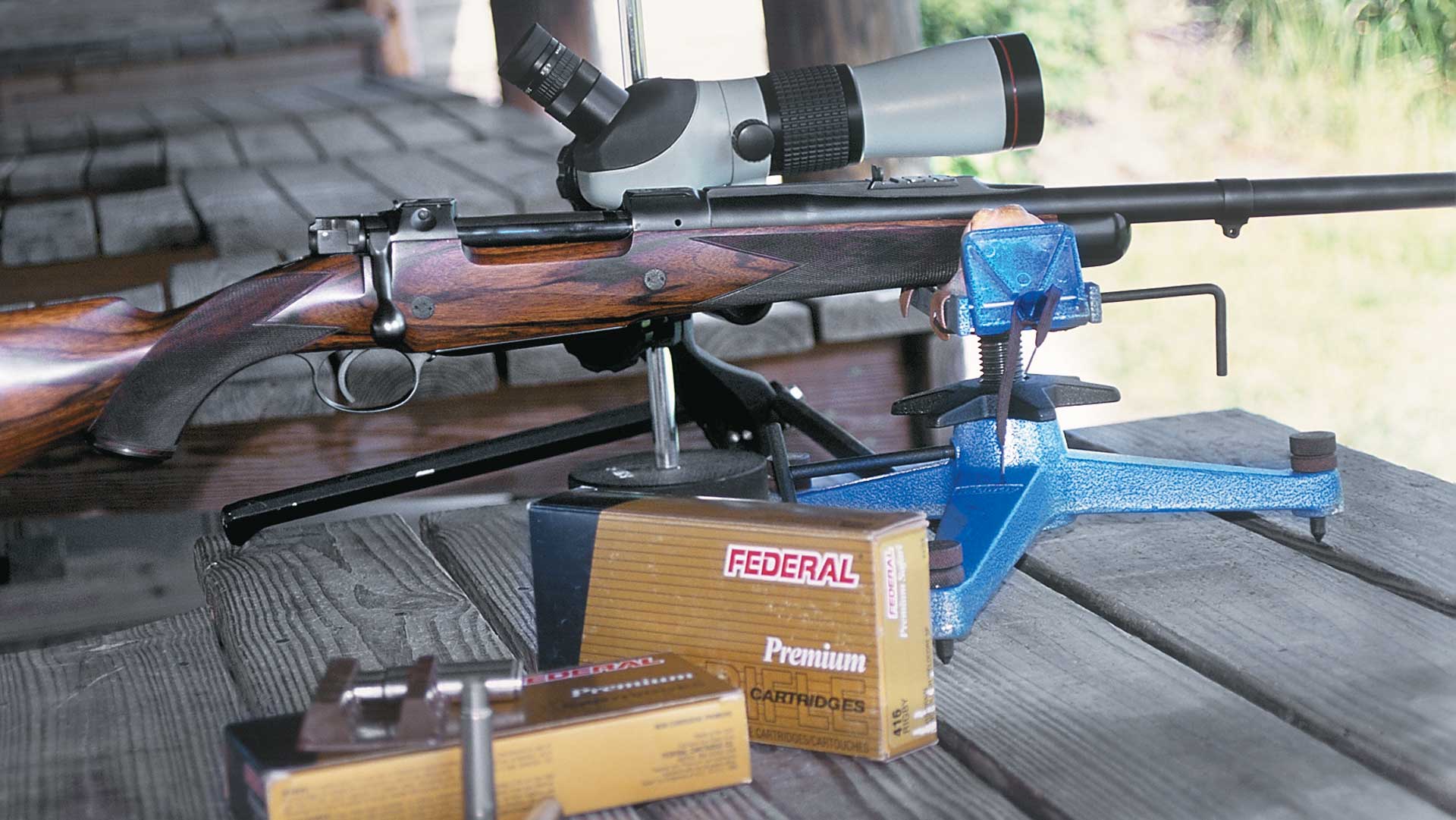
A vintage Brno ZKK 602 action (the one with the pop-up aperture sight) provided a strong and solid foundation for a .416 Rigby custom rifle. While the Brno action’s double-square bridge configuration with factory built-in dovetails will accept a scope, this rifle is designed to be used almost exclusively with iron sights.
Lon fitted a 24” Douglas premium barrel to the action and then attached a quarter-rib, barrel-band front sight (with an ivory-beaded, pop-up low-light sight), and barrel-band sling swivel. The quarter-rib accommodates three shallow V express-style leaves that all fold down and out of the way when the spring-loaded aperture sight is engaged by the push of a button on right rear side of the receiver.The barrel-band front ramp sight is positioned at the muzzle and a barrel-band sling-swivel is located 21⁄2” in front of the fore-end tip. All metal work has been rust-blued, the action polished for flawless feeding, and the trigger honed to break crisply at 31⁄2 lbs. Like an original Rigby, the magazine holds four rounds, and the Brno safety has been converted to a Model 70 wing-type safety.
Great attention was given to the stock design and dimensions to attain the handling and pointing qualities that the original Rigbys exhibit. Indulging my taste for English guns, Lon shaped a beautiful piece of straight-grained English walnut, which he selected for strength and beauty, to Rigby-style dimensions, thus achieving a classic “look and feel.” Rifles that are properly set up with “quick-to-acquire” iron sights demand stock combs with somewhat more drop at the heel than most modern rifles with high or sight-combed stocks designed for scope use.“You rarely find modern stock designs possessing the ‘bird gun’ pointing qualities that one is immediately aware of when handling a vintage Rigby, Jeffery or London designed firearm,” Lon pointed out.
A hinged steel grip cap hides a spare front sight wrapped in oilcloth that’s stored in a small hollow in the bottom of the pistol grip. Recoil is tamed with a Pachmayr Decelerator recoil pad fitted to the buttstock, and the fore-end is capped with a fine-grained piece of Cape buffalo horn. At the hands of a skilled and talented gunsmith the sturdy Brno-actioned rifle was transformed into a handsome dangerous-game gun, which now embodies all the best features required of a gun that you can stake your life on. There is no doubt in my mind that this rifle, when called upon, will provide the kind of reliable insurance that’s necessary to stop Africa’s largest and toughest game.












